Moniek Bloks's Blog, page 158
January 2, 2021
Fennena of Kuyavia – Traces of a lost Queen
When King Andrew III of Hungary died in 1301, he left behind a daughter, Elizabeth and a widow, Agnes. Elizabeth and Agnes’ lives would be closely connected, but Agnes was not the mother of Andrew’s daughter. Elizabeth’s mother was Andrew’s often forgotten first wife, Fennena of Kuyavia.
Difficult Early Life
There are very little records of Fenenna of Kuyavia. She is estimated to have been born between 1268 and 1277. The year 1276 is often given as an approximate date of birth. Her parents were Ziemomysl of Kuyavia, Prince of Inowroclaw and Salomea of Pomerania. Fenenna was born into Poland’s ruling Piast dynasty. The name Fenenna was very uncommon, and Fenenna of Kuyavia was the only member of the Piast dynasty to have it. This name comes from the Bible.
Fenenna’s father, Ziemomysl was the second of two sons born to Casimir I of Kuyavia, and his second wife, Constance of Wroclaw. Casimir had no children from his first marriage. He married thirdly to Euphrosyne of Opole, by whom he had three sons and a daughter. His oldest son from this marriage was Wladyslaw, later King of Poland. Euphrosyne wanted her husband’s territories to go to her sons instead of Ziemomysl and his full-brother. There were even rumours that she tried to poison her stepsons. After Casimir’s death in 1267, Wladyslaw inherited the bulk of his father’s territories, becoming Duke of Kuyavia, and Ziemomsyl was left with the small division of Inowroclaw. In 1271, Ziemomysl lost his principality and was forced into exile, along with his wife and children. The family spent the next seven years in exile at the court of Salomea’s maternal relatives, in Mecklenburg. Salomea probably gave birth to Fenenna during this time. In 1278, Ziemomysl was able to recover his lands, and he and his family returned to Inowroclaw.
Ziemomysl died in 1287, and his duchy was divided up between his three young sons. The boys were under the regency of their mother and half-uncle, Wladyslaw. The next year, Fenenna’s full-uncle, Leszek died childless. Leszek had been High Duke, ruling over all of the Piast princes, and now Wladyslaw, as the oldest surviving brother lay claim to be High Duke. He did not become High Duke until much later, but he looked for allies abroad. Since Wladyslaw was unmarried and childless at the time, Fenenna and her siblings became important in his dynastic policies.
Queen of Hungary
In 1290, Andrew became King Andrew III of Hungary after the death of his cousin. Wladyslaw allied with Andrew and arranged for him to marry Fenenna. Andrew and Fenenna were married between September and November 1290. Around this time Fenenna was crowned Queen of Hungary. Fenenna did not play a big role as Queen, and there are very few records of her activities. However, she is known to have granted several charters. She also seems to have been a big supporter of the Franciscan order, may have helped in completing a Franciscan friary. Fenenna had her own royal seal, of which a part still survives. She is depicted on the seal with her hair in braids, which was unusual. Most Queens around this time were depicted on their seals with their hair loose.
During Fenenna’s brief time as Queen, she gave birth to one child, a daughter named Elizabeth, between 1291 and 1293. Fenenna died at a young age near the end of 1295, but the exact date and cause are unknown. Some speculate that her death could have been from complications from the birth of her daughter, but it’s unlikely since Elizabeth was born two to four years prior. Fenenna’s last charter was issued on 8 September 1295, and Andrew started negotiating his marriage with Agnes of Austria in early 1296. It is believed that Fenenna died around December 1295, probably during Advent. Even the place of her burial is unknown. It is thought that she was most likely buried in the Franciscan Friary in Buda, where Andrew would be buried following his death five years later.
Soon after Fenenna’s death, Andrew married Agnes of Austria, by whom he had no children. In 1398, he betrothed his daughter Elizabeth to the future King Wenceslaus III of Bohemia and planned on them to succeed to the throne of Hungary. When Andrew died in 1301, Wenceslaus became King of Hungary, but Elizabeth would never become queen. In 1305, Wenceslaus married Viola of Teschen instead and resigned the Hungarian throne. Elizabeth eventually became a nun. In 1308, Charles of Anjou, a distant cousin of Andrew, became King of Hungary. In 1320, Fenenna’s uncle, Wladyslaw became King of Poland, and his daughter, Fenenna’s first cousin, Elizabeth married Charles. Their son Louis, King of Hungary married Elizabeth of Bosnia, a granddaughter of Fenenna’s youngest brother, Casimir.1
The post Fennena of Kuyavia – Traces of a lost Queen appeared first on History of Royal Women.
December 31, 2020
Queen Victoria and the Romanovs by Coryne Hall Book Review
Queen Victoria’s relationship with the Romanovs began with the tragic tale of her aunt Juliane, whose disastrous marriage to Grand Duke Konstantin Pavlovich of Russia ended in an annulment in 1820. It kicked off many years of Anglo-Russian distrust, despite Victoria having quite the crush on the future Emperor Alexander II of Russia in the early years of her reign.
Queen Victoria would eventually see her granddaughters Elisabeth and Alix married into the Russian Imperial family though luckily she did not live to see their tragic end. I’ve read many books on both Queen Victoria and Russia over the years and to see this relationship examined in such detail is quite a treat. Coryne Hall never disappoints with her research and eye for detail. The only thing that I didn’t like was the use of nicknames but that is just a personal preference.
Overall, I’d highly recommend Queen Victoria and the Romanovs to anyone looking to delve deeper into their complicated relationship.
Queen Victoria and the Romanovs by Coryne Hall is available now in both the UK and the US.
The post Queen Victoria and the Romanovs by Coryne Hall Book Review appeared first on History of Royal Women.
December 30, 2020
The Royal Women of Maximilian (TV series)
With the 2017 series Maximilian now available via Starz, we are introduced to some more unknown royal women.
Mary, Duchess of Burgundy
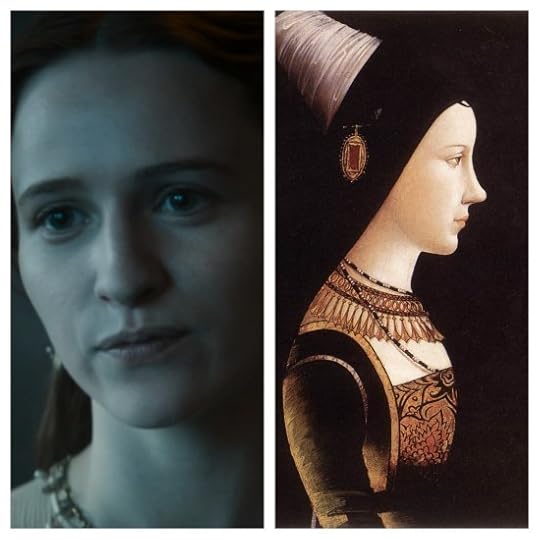
Although the series is called Maximillian, the second main character is Mary, Duchess of Burgundy – his wife. Challenged in her rights to become Duchess in her own right by the French, she seeks a strong alliance. Mary was the only child of Charles the Bold, Duke of Burgundy and his first wife, Isabella of Bourbon. She married Archduke Maximilian of Austria, who would become Holy Roman Emperor after her death. She had two children during their short marriage; Philip (later King of Castile as the consort of Queen Joanna of Castile) and Margaret (read below).
She was still only 25 years old when she had a horse-riding accident and died shortly after.
Margaret of Austria, Princess of Asturias and Duchess of Savoy
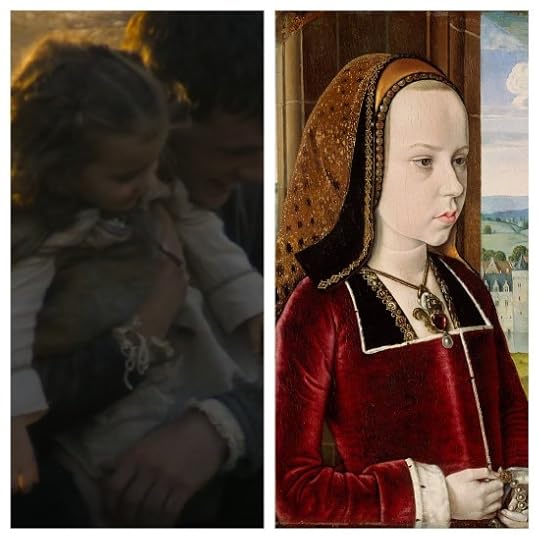
Mary’s daughter Margaret probably had little recollection of her mother as she died when Margaret was only two years old. Margaret was raised at the French court as the betrothed of the future King Charles VIII of France but she returned home in 1493 after he renounced the betrothal. She went on to marry twice; her first marriage to John, Prince of Asturias, ended with his sudden death six months later. Margaret was left a pregnant widow and she gave birth to a stillborn daughter six months later. A second marriage to Philibert II, Duke of Savoy was also brief; he died just three years into the marriage. Margaret went on to serve as Governor of the Habsburg Netherlands for 23 years.
Kunigunde of Austria, Duchess of Bavaria
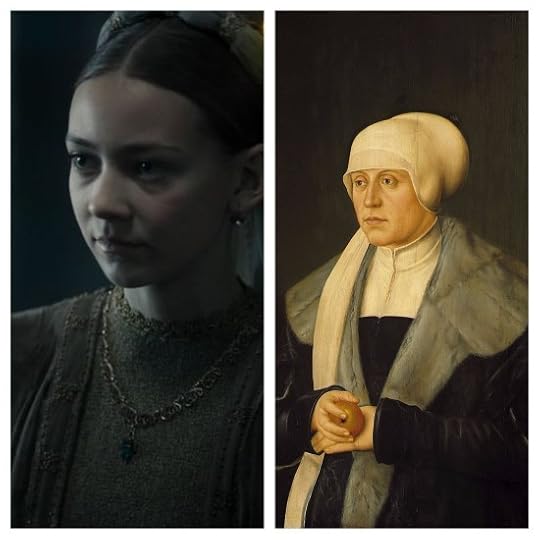
Kunigunde was the only surviving sibling of Maximilian. She married Albert IV, Duke of Bavaria in 1487 and stayed in close contact with her brother. She and her husband went on to have seven children and after her husband’s death in 1508, she retired to the Convent of Püttrich. Through her youngest daughter Susanna, she was an ancestress of the House of Hannover.
Margaret of York, Duchess of Burgundy
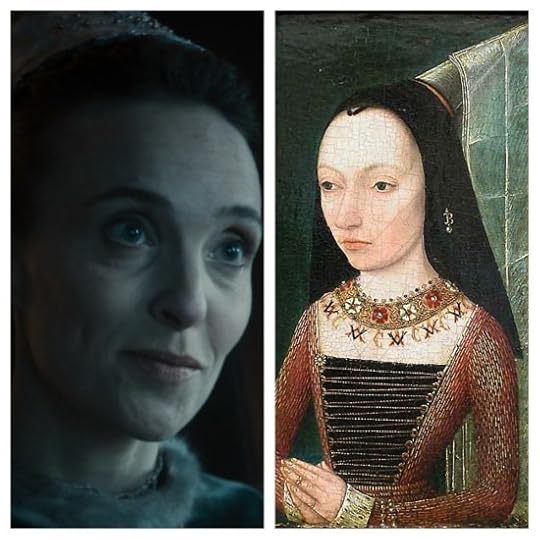
Margaret of York was Charles the Bold’s third wife and the one to survive him. She was close to her stepdaughter Mary and also closely followed the fate of her family in England. She was the sister of Kings Edward IV and Richard III.
Charlotte of Savoy, Queen of France
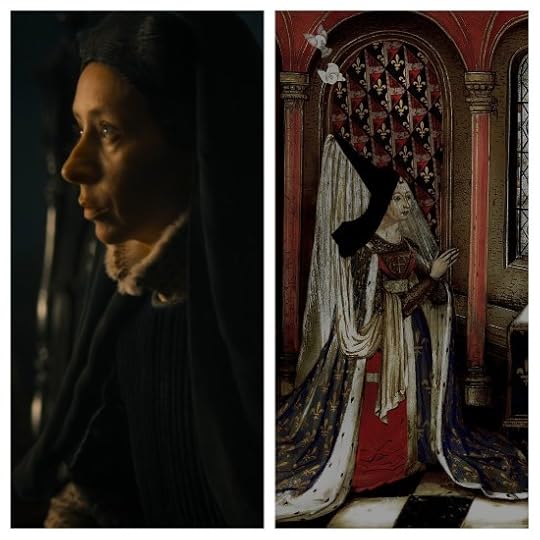
Charlotte of Savoy was the second wife of King Louis XI of France; his first wife had been Margaret Stewart. The French are introduced after they challenge Mary’s right to her throne and their attempts at marrying her to the Dauphin. Charlotte became the mother of Louis’s eight children, but tragically only three would survive to adulthood. She lived a rather secluded life as Queen and spent her day at the Château of Amboise, where she supervised the education of her daughters. She was widowed in 1483 but she was not officially made regent. Instead, she served on a royal council alongside her sons-in-law, though her eldest daughter Anne was the de facto regent. She survived her husband for just a few months.
Anne of France, Duchess of Bourbon (Regent of France)
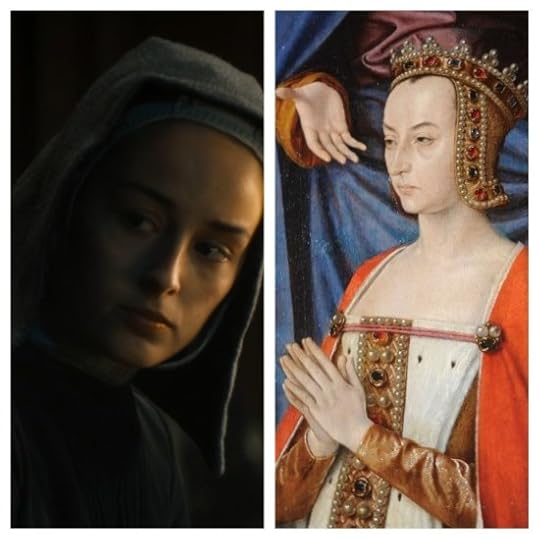
Anne, the eldest surviving daughter of King Louis XI of France and Charlotte of Savoy, married Peter of Bourbon at the age 12. He later became Duke of Bourbon, making Anne his Duchess. They had two children together, though only a daughter named Suzanne survived to adulthood. Anne held the de facto regency of France for 8 years during her brother’s minority and she was known to have been one of the most powerful and intelligent women in France.
(Saint) Joan of France, Queen of France, Duchess of Berry
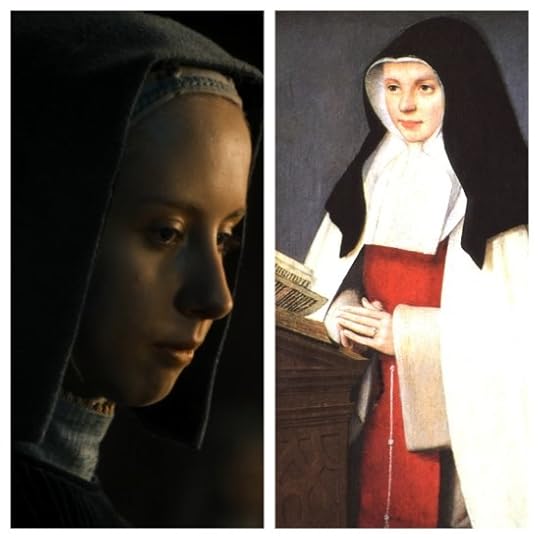
Joan, the second surviving daughter of King Louis XI of France and Charlotte of Savoy. She was known to be sickly and her father believed her to be sterile. He married her off to her cousin Louis, Duke of Orléans, who was the next heir after her brother, hoping to end that line of the family. Neither party was happy with the arrangement and Louis treated her with disdain. She became Queen in 1498 after the death of her brother but Louis was determined to be rid of her. He had the marriage annulled though Joan fought it tooth and nail. She was made Duchess of Berry and turned to the religious life. She died in 1505 and was eventually canonised on 28 May 1950.
The post The Royal Women of Maximilian (TV series) appeared first on History of Royal Women.
December 29, 2020
Maria Luisa of Savoy – La Saboyana
Maria Luisa of Savoy was born on 17 September 1688 at the Royal Palace of Turin as the third daughter and second surviving child of Victor Amadeus II, Duke of Savoy and Anne Marie of Orléans – the youngest daughter of Philippe I, Duke of Orléans and Henrietta of England. She was one of nine children, though only two of her siblings would survive to adulthood; her elder sister Marie Adélaïde, who became Dauphine of France and the mother of King Louis XV of France, and Charles Emmanuel, who eventually became King of Sardinia.
She was reportedly educated very well, though not much is known of her early youth. In September 1701, she was selected as a bride for King Philip V of Spain – she was still a few days shy of her 13th birthday. They were married by proxy on 12 September 1701, and they met in person in Barcelona later that same month. The official wedding took place on 2 November 1701. The 17-year-old Philip was the second son of Louis, the Grand Dauphin – the son and heir of King Louis XIV of France. King Charles II of Spain was destined to die childless – though not for lack of trying – and Philip was a grandson of Maria Theresa of Spain, who was King Charles’s elder half-sister. As the second son, he was not expected to inherit the French throne, and he was named as King Charles’s heir – succeeding him upon his death on 1 November 1700. Nevertheless, Charles’s death provoked the War of the Spanish Succession, which continued until the Treaty of Utrecht confirmed that the crowns of Spain and France could never be united. Thus, Philip was the first King of Spain from the House of Bourbon.
Maria Luisa had been selected by Philip’s grandfather King Louis XIV of France, probably because of her young age. Her aunt Marie Louise had also been King Charles II of Spain’s first wife. He believed that Maria Luisa could be easily manipulated and appointed Marie Anne de La Trémoille, Princesse des Ursins, as her Mistress of the Robes. It would be her task to keep the young King and Queen of Spain from acting against French interests. King Louis even warned his grandson, “Kings, exposed to the gaze of the public, are all the more greatly scorned when they suffer their wives to dominate. You have, before your eyes, the example of your predecessor. The Queen is your first subject. In that quality and as your wife, she ought to obey you… Be strong from the beginning.”1
Maria Luisa and Philip hit it off very well, though Philip soon had to leave his wife to fight for his crown. Maria Luisa, though young and inexperienced, was left behind as regent. Nevertheless, she proved to be a hard worker. She never signed anything that she did not understand, insisted on all complaints being investigated and any reports were made directly to her. She even read out despatches from the front from her balcony to the people below in order to avoid incorrect gossip to reach the streets. And even though Philip proved his worth on the battlefield, Maria Luisa soon outshone him on the political battlefield. But even more influential was Marie Anne de La Trémoille, who strictly controlled who had access to the Queen. She, Philip and Maria Luisa were a council of three, which would last until Maria Luisa’s death.
Philip began insisting on his conjugal rights early on because his religious scruples prevented him from taking mistresses. He usually spent the entire night together with Maria Luisa. They went on to have at least four children: Louis (1707 – 1724), Philip (1709 – 1709), Philip (1712-1719) and Ferdinand (1713 – 1759).
At the end of 1713, Maria Luisa fell ill with tuberculosis, and she died on 14 February 1714 at the age of just 25. Philip had insisted on his conjugal rights almost to the last, and within weeks his advisers were on the hunt for a new Queen.2 He married Elisabeth Farnese before the year was out.
Although her two surviving sons became Kings of Spain, neither left issue and Maria Luisa has no living descendants. Maria Luisa left a reputation as a model of Queenship, though this was perhaps influenced by her hated successor. She was affectionately known as La Saboyana – the Savoyard.3
The post Maria Luisa of Savoy – La Saboyana appeared first on History of Royal Women.
December 27, 2020
Elizabeth Kahanu Kalanianaʻole – Princess and pioneer
Elizabeth Kahanu Kalanianaʻole was born on 8 May 1878 as the daughter of Ulalia Muolo Keaweaheulu Laʻanui and George Kaleiwohi Kaʻauwai. Her father was the high chief of Maui and a cousin of Queen Kapiolani of Hawaii.
Her father died when she was just four years old, and Elizabeth was sent to Queen Kapionali’s royal court of Oahu. She received her education at the Sacred Hearts Academy in Honolulu because her parents were devout Catholics. While part of the royal entourage she met her future husband, Jonah Kūhiō Kalanianaʻole. Jonah was the youngest of the three sons of Victoria Kinoiki Kekaulike and he and his elder brother were nominated as heirs presumptive to the Hawaiian throne by Queen Liliuokalani in case the heir apparent Crown Princess Kaiulani died.
However, by 1893, the Hawaiian monarchy was overthrown, and Jonah spent the following two years trying to restore the monarchy, in vain. He was even imprisoned for a year for his part in the revolution. Elizabeth visited him almost daily while he was in prison, to bring him his favourite food and to cheer him up by singing songs. He was released from prison on 7 September 1896 and just one month later – on 9 October 1896 – Jonah and Elizabeth were married at St. Andrew’s Cathedral. They went on a belated honeymoon around the world at the end of 1899 that would last for nearly two years. They returned to Honolulu in September 1901, and they settled in Waikiki in a home that Jonah had inherited from Queen Kapiolani. They later had a home built across the street.
Jonah was elected as a delegate to the U.S. House of Representatives from Hawaii Territoryin 1902, and the couple lived in Washington when Congress was in session. Elizabeth was known to be an excellent hostess and entertained four presidents at their home: Theodore Roosevelt, William Howard Taft, Woodrow Wilson and Warren G. Harding. Elizabeth was widowed when Jonah died at the age of 50 on 7 January 1922, and she returned to live in Hawaii full-time. She succeeded her husband on the Hawaiian Homes Commission and served as a member of the commission until her death. Elizabeth was also an active supporter of the Kapiolani Maternity Home due to the declining Hawaiian population, and she held women’s suffrage as a cause close to her heart.
In December 1923, Elizabeth remarried to Frank J. Woods in San Francisco, and they divided their time between Hawaii and Pacific Heights. She was widowed again in 1930 and Elizabeth spent her own final years on Oahu. She suffered a cerebral haemorrhage at her home and died two days later – on 19 February 1932 – in the Queen’s Hospital.1 She left almost nothing in her will, and she had no children by either of her husbands. After her death, a newspaper reported, “In the pioneer work of the Hawaiian Homes Commission, the Princess carried forward the service begun by the delegate-Prince. Her counsel among the homesteaders was invaluable. She brought home to them, as only a Hawaiian leader is able to do, the great responsibility they carried as the practical leaders of a sincere movement of Hawaiians back to their own lands.”2
The day following her death, her body lay in state at her home with “stately kahilis, symbols of royalty, stood on either side of the casket.”3 In addition, the “famous jewels of the Order of Kapiolani and the feather cloak of the princess. The cloak was draped over the casket, and the jewels were pinned to the dress of the princess, where they remained until a few minutes before the casket was sealed.”4 She was buried at Nu’uanu Cemetery beside her second husband. The heavy rain that fell that day was a sign for people that Elizabeth had remained a Princess, even though she had remarried; “Many held that the heavy downpour of rain that fell throughout the afternoon was significant of the ancient Hawaiian tradition which says the heavens weep at the passing of an alii5.”6
The post Elizabeth Kahanu Kalanianaʻole – Princess and pioneer appeared first on History of Royal Women.
December 24, 2020
Augusta Victoria of Hohenzollern – A quiet life in exile
Princess Augusta Victoria of Hohenzollern was born on 19 August 1890 as the daughter of William, Prince of Hohenzollern and Princess Maria Teresa of Bourbon-Two Sicilies. She was born in Potsdam but was raised in Sigmaringen. She had two younger brothers, twins Prince Frederick Victor and Prince Francis Joseph (born 30 August 1891). Her mother was the only legitimate child of Duchess Mathilde Ludovika in Bavaria, Countess of Trani – a sister of Empress Elisabeth of Austria. Augusta Victoria grew up mostly without her mother as Maria Teresa was in delicate health and she passed away in 1909 at the age of 42. Augusta Victoria’s nickname in the family was “Mimi.”
Unfortunately, not much is known about Augusta Victoria’s youth. In 1912, the exiled King Manuel II of Portugal visited his aunt Infanta Maria Josepha of Portugal, the wife of Karl Theodor, Duke in Bavaria – who happened to be Augusta Victoria’s great-uncle and they met there. Augusta Victoria and Manuel were second cousins as her grandmother was Infanta Antónia of Portugal, a daughter of Queen Maria II of Portugal and her King consort Ferdinand II of Portugal. He visited her again in April 1913 in Sigmaringen, and their engagement was announced just a few days later.1
Augusta Victoria’s father announced he was providing her with a dowry of $200,000 on 3 June 1913. The wedding date was set for 4 September 1913 at Sigmaringen. Meanwhile, Manuel returned to England, where he was living, and in June Augusta Victoria and her father arrived there to shop for her trousseau. While she was there, he drove into London every morning to visit her at Claridge’s Hotel. He brought her flowers and accompanied her on the shopping trips. It was the perfect time to get to know each other better.
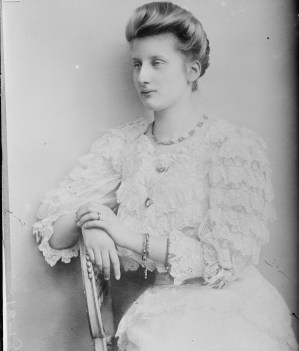 (public domain)
(public domain)Manuel now also needed a permanent residence to call home, and he bought an estate called Fulwell Park in Twickenham. It had plenty of bedrooms, six receptions rooms, four bathrooms and some fifty acres of land. The river Crane flowed through part of it and Manuel and Augusta Victoria would often go rowing together. Manuel returned to Sigmaringen in late August 1913, and his mother Queen Amélie arrived on 2 September, two days before the wedding. The following day, the rest of the distinguished guests began to arrive, such as the Prince of Wales (the future King Edward VIII), the Duke and Duchess of Saxe-Coburg-Gotha and the Grand Duke and Duchess of Baden. There was certainly no shortage of royal personages.
The evening before the wedding, the wedding guests gathered for a banquet in Sigmaringen Castle’s Portuguese Gallery. The following day, soldiers and schoolchildren lined the road between the castle and the parish church along arches with flowers. The Patriarch of Lisbon, who had also baptised Manuel many years ago, officiated the religious ceremony while Count August zu Eulenburg, the Grand Marshal of the Imperial Court of Germany, presided over the civil ceremony. Augusta Victoria wore a white gown with a long lace veil. After a luncheon with all their guests, the newlyweds departed for their honeymoon near Munich. The wedding guests enjoyed a gala dinner that evening.
Just a few weeks into the honeymoon, Augusta Victoria became seriously ill and had to be rushed to a hospital in Munich. An official statement later revealed “a temporary attack of influenza.” It delayed their move to England that had been planned for the end of September. She returned to her family home of Sigmaringen to recover where rumours began to circulate that her illness was perhaps a little more serious than influenza. Other rumours even said that she had deserted their marriage. From Paris, her mother-in-law issued a rebuttal: “King Manuel, myself, and our suite are extremely indignant at the stories that have been circulated. Queen Augusta Victoria contracted illness through a walk on a very cold night, and at one time we feared typhoid fever. Happily that danger is over.”2
By the following spring, Augusta Victoria was well enough to travel, and she and Manuel set up their home at Fulwell Park. They were soon a full part of the social circles in London. If there was any marital strain, the First World War was the likely cause as the Augusta Victoria was naturally pro-German as a Hohenzollern while Portugal has a long-standing alliance with the United Kingdom. Manuel offered his services to King George V in any capacity he might be needed. Not wishing to see him physically harmed, he was eventually offered a position with the British Red Cross where he would work with the rehabilitation program for wounded and disabled servicemen. He was very much involved throughout the war and visited various parts of the United Kingdom. Augusta Victoria reportedly also did volunteer work during the war, but very little is known about it.
Augusta Victoria and Manuel’s marriage was destined to remain childless. On 21 February 1920, his uncle and heir Infante Afonso, Duke of Porto, died, leaving no heir. On 31 July 1920, his cousin Miguel, Duke of Braganza and his eldest son Miguel, Duke of Viseu renounced their rights to the throne in favour of their son and half-brother – the 13-year-old Duarte Nuno. The line of Miguel was actually a rival line – dating back to Queen Maria II of Portugal whose reign was challenged by her uncle Miguel. However, it was clear to Manuel that his line might eventually die out (as it would), leaving the line of Miguel as the default line. Thus, he recognised his cousin as his heir if his own marriage should prove childless.
Manuel and Augusta Victoria lived a quiet life at Fulwell Park, although they did sometimes attend high profile events. It seems to have been a happy marriage, despite their childlessness. Manuel died rather suddenly on 2 July 1932. He had complained of a sore throat that morning and saw a laryngologist in London that same day. Upon his return home, he went to bed, where he had a light lunch. He suddenly felt breathless and suffocated following swelling of the opening at the upper end of the larynx. Augusta Victoria had been at his bedside and witnessed his horrifying last minutes.
King Manuel’s mother Amélie arrived from France the following day, just in time to receive a condolence visit from King George V and Queen Mary. On 8 July, his body was transported from Fulwell Park to the Catholic Church at Weybridge. Amélie, Augusta Victoria and a few select friends attended a mass beforehand. His body remained there for a few days before it was moved to the Roman Catholic Cathedral of Westminster where it was placed before the High Altar. A special memorial service was held on 14 July in the presence of Amélie, Augusta Victoria, former King Alfonso XIII of Spain, former King George II of Greece, the Duke of Gloucester and other dignitaries. The Portuguese government agreed to have Manuel interred in Lisbon and decreed that a state funeral would be held on 2 August 1932. On 28 July 1932, Manuel’s coffin was placed on the British cruiser Concord at Portsmouth. Manuel had bequeathed all his personal possessions to the Portuguese nation, while the revenues would continue to go to Augusta Victoria during her lifetime – not that she needed it.
Augusta Victoria sold Fulwell Park and returned to live in Germany. She would remarry on 23 April 1939 to Count Robert Douglas at Schloss Langenstein. By this marriage, she became stepmother to his four children from his first marriage. She continued her quiet life with him in Germany and was widowed again on 26 August 1955. She outlived her second husband for 11 years – dying on 29 August 1966 at her residence at Münchhof in Baden. She was buried at Schloss Langenstein.3
The post Augusta Victoria of Hohenzollern – A quiet life in exile appeared first on History of Royal Women.
December 23, 2020
Tsars and Knights: The Romanovs’ Love Affair with the Middle Ages
It is one the Hermitage Amsterdam’s longest awaited exhibitions – not in the least because the museum had to close due to the Coronavirus measures. The opening day finally came on 19 November.
Tsars and Knights: The Romanovs’ Love Affair with the Middle Ages has over 250 items from several collections. Grand harnesses and knights line the first room you enter. From a gift given by Alexandra Feodorovna to her husband Tsar Nicholas I of Russia to one worn by Charles V, Holy Roman Emperor. Don’t miss the Tsarkoe Selo Carousel painting which portrays Alexandra Feodorovna as a medieval maiden before heading off into the medieval Bazilevski collection, acquired by Tsar Alexander III in 1884. The Courtly Love theme is highlighted by the Roman de la Rosa manuscript and head upstairs to find some Dutch treasures as well.
I found the exhibition quite enjoyable, despite the fact that it isn’t entirely my area of expertise! You can see that they’ve put a lot of hard work into it and it sure looks like it will be enjoyable for children as well. I do wish they had done a little more with merchandising and such!
The exhibition will run until 31 July 2021. Hopefully, by then, even tourists will be able to visit Amsterdam again!
Click to view slideshow.
More information can be found here.
The post Tsars and Knights: The Romanovs’ Love Affair with the Middle Ages appeared first on History of Royal Women.
December 22, 2020
Explore Sweden with HRH Crown Princess Victoria Book Review
Crown Princess Victoria of Sweden’s two-year plan to explore every Swedish province on foot has turned into an ode to Swedish magnificent natural beauty.
Throughout the seasons, the Crown Princess hiked through the provinces and the resulting 320-page book is filled with beautiful photos, sometimes including the Crown Princess herself but mostly of the overwhelmingly sumptuous nature. Crown Princess Victoria herself is often quoted in the book and you can tell she has a real love for Sweden.
The large hardcover book is a real treat and it has certainly inspired me to want to visit Sweden. Perhaps one day that dream will come true. In the meantime, we’ll have to make do with this great book.
Explore Sweden with HRH Crown Princess Victoria is available in English and in Swedish.
The post Explore Sweden with HRH Crown Princess Victoria Book Review appeared first on History of Royal Women.
December 21, 2020
Emily Ruete – A Princess caught between two worlds (Part two)
Emily spent many happy hours in the countryside, but she longed to see the sea and set about leasing a plantation by the sea called Bububu. She took many of her animals with her and was often visited by family there. However, her joy did not last long as Madjid requested Bububu from her for the new British Consul. She decided not to anger Madjid and gave it up for him. She moved back to the city, where she was given her own seat. While there, she met a young German man, who lived in Zanzibar as a representative of a Hamburg mercantile firm. Heinrich Ruete was her neighbour in town, and she was able to see into the room where he held dinner parties. Their friendship soon turned to love, and it was well-known in the town. It appeared that even Madjid learned of it. Emily wanted to marry him, which would be impossible in Zanzibar, and so they would have to leave in secret. A first attempt failed miserably, but during a second attempt, Emily was taken on board the British frigate HMS Highflyer to the British colony of Aden. She was by then obviously pregnant, making the flight necessary. Heinrich stayed behind to wrap up his affairs in Zanzibar and while in Aden, Emily was instructed in Christianity and baptised with the name Emily. Her brother Madjid demanded her return to Zanzibar, but Emily refused. In Aden, Emily gave birth to the couple’s first son, though he appears to have died young.
Heinrich finally joined her Aden nine months after her flight, and they were promptly married on 30 May 1867. They immediately travelled to Hamburg via Marseilles. In Hamburg, Emily gave birth to three children in quick succession: Antonia Thawke (1868), Rudolph Said (1869) and Rosalie Ghuza (1870). Emily had learned to speak some German but found it difficult to communicate, and she found life in Europe to be unbearable. She believed herself to be morally corrupt for converting to Christianity and stressed in letters that she remained a Muslim. She avoided eating pork and dreaded attending church.1
Her marriage to Heinrich was destined to be short. He was killed in 1870 in a tram accident. He had fallen while jumping from the tram car and was run over. He died after three days of suffering. Emily was left with three young children; her youngest was just three months old. She contemplated returning to Zanzibar, but Madjid would also die that year, and his successor was the rebellious Barghash who declared her legally dead, thus denying Emily her father’s inheritance. It had been Heinrich’s wish that his children were raised as Europeans and she set out to honour his wish, though it pained her deeply. She also faced financial difficulties without him and soon relocated to Dresden, then to Rudolstadt, Berlin and Cologne. In Berlin, she gave lessons in Arabic and Swahili.
It would not be until 1885 that Emily returned to Zanzibar to claim her inheritance and see her siblings. She took all three of her children with her. She wrote, “I had left my native home an Arab and a true Mahometan; I returned an undeserving Christian and half a German.”2 Barghash was still in power as the Sultan and he refused to acknowledge her and forbade the family to see her. She later described returning to Zanzibar as if it was a dream. She did not stay in town and spent the nights on board a German ship. She was never granted an audience by her brother and was forced to return to Germany empty-handed.3
When Emily made a second attempt to recover her inheritance in 1888, her younger brother Khalifah was the Sultan, but by then she had lost the support of the German consul, and so Khalifah dismissed her claims. Emily felt betrayed by Germany and refused to return, and she sailed for Jaffa, which had a large German community. After four years in Jaffa, she and her two daughters settled in Beirut. Her son took up a position at the German consulate in Beirut. She felt at ease in Jaffa, as she could speak Arabic but still live like a European lady. In 1914, Emily returned to Germany and lived with her daughter Rosalie in Jena. She died in 1924 of pneumonia and was buried in the cemetery of Ohlsdorf in Hamburg.4
The post Emily Ruete – A Princess caught between two worlds (Part two) appeared first on History of Royal Women.
December 20, 2020
Emily Ruete – A Princess caught between two worlds (Part one)
Emily Ruete was born 30 August 1844 as Salama bint Said1 as the youngest daughter of Sayyid Said bin Sultan Al-Busaid, Sultan of Zanzibar and Oman and Jilfidan, a concubine. She was born in the Bet il Mtoni palace, five miles from the city of Zanzibar, and she would spend the first seven years of her life there. Her father lived in the wing closest to the sea with his principal wife. He spent four days a week there, and the remaining days were spent in the city palace of Bet il Sahel. At the time of her birth, her father was 53 years old, and she only remembered him with his snow-white beard. His nickname for her was “old woman” as she was fond of cold milk soup, which was usually eaten by old and toothless people.
Her mother Jilfidan was a Circassian who had been taken from her home. Her father had been a farmer, and she was known to have had a little brother and sister. When Jilfidan was taken, her parents were killed, and the children were taken and eventually separated. Jilfidan never saw either of her siblings again. Jilfidan was still only about seven or eight years old when she was taken to the Sultan. She was brought up with daughters of the Sultan her own age. She was educated with them and learned to read. She had at least one other daughter beside Emily, who tragically died very young.
Emily grew up with around 35 siblings, though as one of the youngest, some of them already had children of their own by the time she was born. In her memoirs, she estimated she may have had up to 100 siblings.2 When her brother Madjid came of age, he asked her and her mother to come and live with him in his new household at Bet il Watoro, close to the city palace, and with the consent of the Sultan, they moved in with him. Emily was mostly glad to be removed from a particularly harsh teacher. Upon arrival, she found it to be small, and she was unhappy at first. She found some happiness there when she learned that her brother kept all kinds of animals, including white rabbits. She also became closer to her brother, and she often accompanied him. She eventually came to own some animals of her own, such a fighting cocks. Madjid also taught her fencing and shooting. She later wrote in her memoirs, “In fact, he made quite an amazon of me, greatly to the distress of my dear mother, who declined to learn anything about fencing and shooting.”3 A eunuch named Mesrur helped her improve her horsemanship. Soon Emily was dividing her time between the city palace and her brother’s household as her father wanted her to continue her lessons. The new teacher was a woman, and Emily became quite close to her. For two years, life passed peacefully.
After Madjid married his third wife there was some in-house fighting that soon became unbearably to Jilfidan. She and Emily moved to Bet il Tani, which was connected to the city palace by a suspension bridge, where Madjid still visited them regularly. Here, Emily learned to write in secret, as women were not allowed to write. On 19 October 1856, Emily’s father died, and his realm was divided among several of his sons. Madjid became the new Sultan of Zanzibar, and the family was plunged into mourning. Her father’s wives and concubines had to submit to religious mourning for four months in a dark room. Around this time, Emily was declared of age and granted her inheritance. She was still only 12 years old, quite young to be declared of age. For now, Madjid would care for the properties left to her and Emily remained at Bet il Tani with her mother.
Just three years later, Emily watched in horror as her mother too was taken from her – probably by cholera. She wrote in her memoirs, “For two days longer she withstood its attacks, then she was taken from me for ever. My grief was boundless, and without heeding the warnings of my friends, who were afraid I might catch the disease, I clung frantically to the dear body. My only desire was to leave this world together with my mother, but God willed that I should be spared, and to His will, I at last found the strength to resign myself.” She was barely 15 years old.4 She went to live with her sister Chole, who then came into conflict with Madjid and another brother of theirs named Barghash and Emily was caught in between. Barghash had failed to usurp her father’s power, and now he rebelled against Madjid. With her ability to write, she was able to act as a secretary for Barghash as her sister Chole convinced her. The rebellion was eventually ended in Madjid’s favour, and Emily retreated to Kisimbani, one of the plantations she had inherited. She eventually made peace with Madjid who refused to publicly humiliate any woman.
Part two coming soon.
The post Emily Ruete – A Princess caught between two worlds (Part one) appeared first on History of Royal Women.



